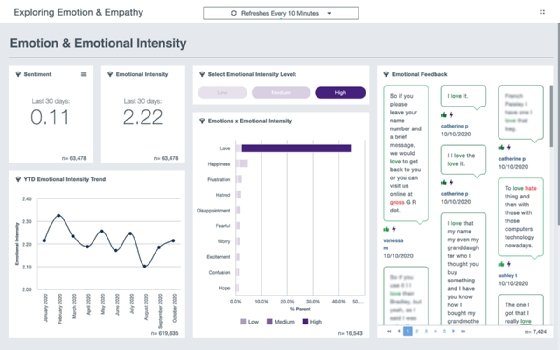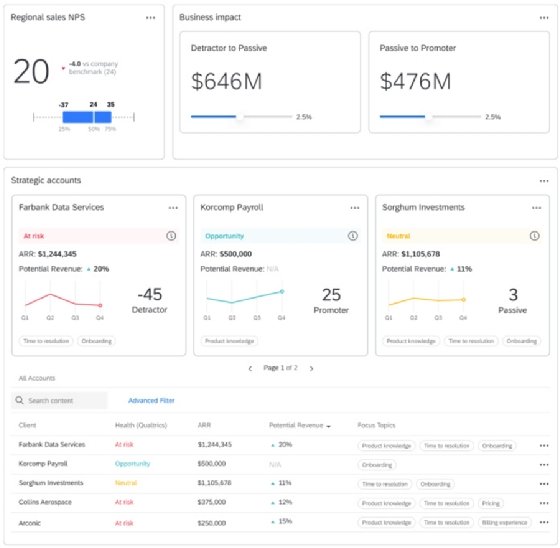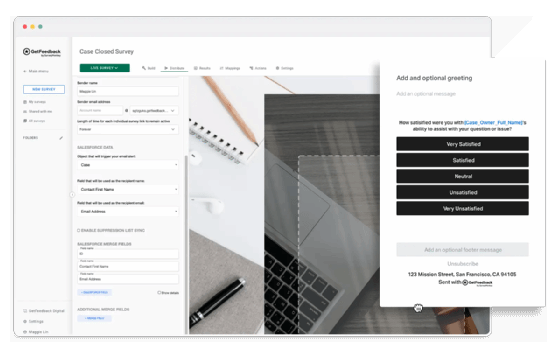
Getty Images
10 voice of the customer tools to consider
A voice of the customer tool is invaluable for creating an action plan to improve the customer experience.
Voice of the customer tools help provide a complete view of the customer experience by collecting feedback across multiple channels. Collecting customer data can be a difficult task, but VoC tools can help make the process easier.
What are voice of the customer tools?
Voice of the customer tools are software applications that integrate feedback collection, analysis, distribution and action into a single, interconnected platform to help organizations understand and improve the customer experience. Feedback collection channels can include email, websites, paper, text messages, voice interactions and more. These complement, and are sometimes integrated with, digital experience monitoring tools that improve quantitative analytics of user experience. VoC tools typically capture data from email, websites and voice interactions at scale.
A successful VoC program provides in-depth and actionable feedback that guides new products and business models. It can also identify gaps or problems that enable teams to resolve issues before they grow out of control. VoC tools focus on improving the qualitative and behavioral aspects of the user experience such as what the customer said, bought or clicked on.
There are three common types of VoC data: direct feedback, indirect feedback and inferred feedback. Direct feedback is when a customer deliberately answers a survey or files a complaint. Indirect feedback comes from review sites, social media mentions or by analyzing call and email correspondences. Finally, an organization can measure inferred feedback by analyzing metrics such as clickstream data and purchase history.
Overview of options for voice of the customer tools
Alchemer
Alchemer Activated NPS Solution allows businesses to automate the collection, workflow, integration and ability to act on customer feedback. Its key strength lies in weaving data from other applications and processes the organization already uses, such as email, enterprise communication tools, customer support systems, CRM and IT service management systems. All feedback and data can also integrate with business intelligence tools for deeper analysis and association with revenue and customer engagement models.
This tool may not be a good fit for organizations with advanced use cases such as analyzing more indirect and inferred data or coordinating with customer journey mapping analysis. However, it excels for SMBs and is sold on a per-seat basis, with prices ranging from under $10,000 up to $50,000.
Clarabridge
Clarabridge provides text and speech analytics that enable organizations to analyze emails, conversations with agents, ratings, reviews and social media interactions while ensuring compliance with the growing body of privacy mandates. Its key strength lies in providing a foundation for aggregating and analyzing large bodies of text from across different systems. The company has established a growing presence in financial services, healthcare, insurance, digital commerce, consumer packaged goods, transportation, retail, media and tech industries.
However, its weaknesses include a lack of workforce management, ticketing capabilities and emphasis on survey tools. For this reason, it's recommended to use it as a complement to, rather than a replacement for, other voice of the customer tools that have survey and workforce management capabilities.
A spokesperson said Clarabridge does not publicly disclose its pricing information and, instead, primarily works with businesses actively working to improve their CX programs on an enterprise scale and has proven its ability to provide immense value to its customers.

Confirmit
Confirmit provides software that can handle large quantities of customer feedback and sophisticated analytics for large amounts of data. It supports highly visual reporting techniques that tell stories to help connect insight to specific actions. It includes components for designing and delivering engaging customer surveys, integrating with additional data sources (such as CRM, financial and ERP platforms), analyzing data and driving action.
Its strengths include its strong service and support network, as well as advanced analytics through the Dapresy tool set. It is a sophisticated product and, therefore, requires specific training to make the most of the investment. The price will vary depending on the type of implementation and the modules used.
CustomerGauge
CustomerGauge is a good VoC option for B2B needs. It provides actionable information to customer success managers, relationship managers and account managers working in Salesforce and Microsoft Dynamics. The platform is a mid-tier offering. One key feature is a suite of sentiment analysis tools that pulls data from different sources into a comprehensive net promoter score (NPS). It can pull in account data from support tickets and website visits to proactively predict account churn with machine learning and AI.
CustomerGauge is known for large and complex global rollouts of enterprise B2B account experience programs for brands such as DHL, Iron Mountain, Electrolux and H&R Block. Its biggest weakness is its lack of focus on B2C use cases, which means the software is less suitable for businesses looking to survey end consumers.
Medallia
Medallia promotes an approach for capturing and analyzing customer engagement data from various applications to provide a single view of a customer journey. The system also features an AI and machine learning engine that is tailored to analyze the incoming streams of data and integrates with most major business applications. It also has modules for triggering actions in service, sales and marketing applications.
Medallia has a diverse set of prebuilt components suitable for various industries. It is a strong candidate for larger organizations with a need for strong governance and management capabilities or smaller firms that can use one of its prepackaged options. As a service, it tends to cost more than other options on the market.
Qualtrics
Qualtrics, a division of SAP, is one of the largest voice of the customer tool providers with a set of tools tailored for various industries and large enterprises. The Qualtrics Customer Experience Management (CustomerXM) Platform provides a set of integrations and prebuilt components for improving customer and employee experience. It also has features for analyzing and organizing both structured and unstructured data. The company has strong relationships with nearly 200 consultancies and software partners to help customize and implement enterprise-wide rollouts. It does, however, have a relatively higher cost compared with other tools.

QuestionPro
Question Pro is a relatively smaller voice of the customer tool provider. It is well suited for SMBs -- particularly, in the education, hospitality, healthcare and travel industries.
A key strength is the platform's support and associated consulting services for setting up VoC communities that provide richer insight into a small cohort of engaged customers. The company has also pioneered improvements that correlate NPS measurements with revenue and make it easier for the customer to guide improvements in the product and service offerings.
While it has a strong set of surveying capabilities, QuestionPro lacks more sophisticated analytics and aggregation capabilities. The price range is $10,000 to $50,000 for most engagements and runs up to $100,000 with consulting services.
SMG
Service Management Group (SMG) offers a software with a service (SwaS) model that is a good fit for location-based services such as stores, hotels, grocery stores, restaurants and healthcare services. It has a set of prepackaged modules that help companies improve specific experiences, such as click and collect.
SMG helps companies with program guidance, data interpretation, benchmarking and insight activation that demonstrates program value. It has developed the Service Profit Chain methodology, which quantifies the link between employee and customer satisfaction, long-term loyalty and sustainable sales growth.
However, it may not be the best choice for B2B companies, and its SwaS model may not be an ideal fit for brands seeking a do-it-yourself SaaS solution. Most multiunit brands can expect a full-service experience management program, which includes software and professional services, with SMG to range between $50,000 to $250,000.
SurveyMonkey
SurveyMonkey is well known for its freemium survey tools, but it has expanded these capabilities with GetFeedback, a more comprehensive VoC tool. GetFeedback is easy to set up, easy to use and cost-efficient. It collects feedback from email, text messages, websites and mobile apps, and it includes analytics tools to help spot trends, analyze sentiment and understand key drivers affecting the business.
GetFeedback is an ideal tool for companies that need to deploy a voice of the customer tool quickly and easily, especially if they use Salesforce, as it has a deep connection with the Salesforce ecosystem. However, its main weakness is that it may not appeal to larger businesses with a need for more sophisticated VoC capabilities and integrations.

Verint
The Verint Experience Management platform enables data collection and integration across digital, physical and contact center databases. Its key strength is its set of speech analytics capabilities built on top of its contact center expertise. It also provides sophisticated analytics that span unstructured text and speech, transcripts and behavioral inputs. It combines this with a predictive experience methodology to help organizations gain insights, automate decisions, keep teams on top of changes and issues, and link changes to desired business outcomes.
As a result, it is best suited for high-volume industries such as retail, financial services, utilities, telecommunications and insurance.
Editor's note: In July 2021, Qualtrics announced its acquisition of Clarabridge in a deal that is expected to close during Q4 2021.








